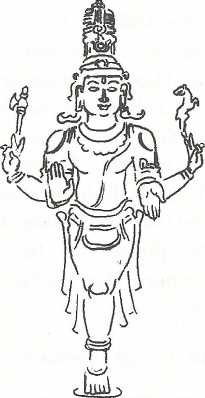Ekapādamurti
By Swami Harshananda
Ekapādamurti literally means ‘image with one leg’.
God has sometimes been described in the scriptures as Ekapāt or Ekapādah. It is applicable because the manifested universe is only a quarter[1] of him. The word is applied to both Śiva and Viṣṇu. ‘Ajaikapāt’ is one of the epithets of Śiva used even in the Ṛgveda.[2]
The Ekapādamurti is actually the iconographic representation of the Vedic concept of Śiva as Ajaikapāt. In this form he has only one leg. He is described as luminous like a million suns, three-eyed and four-armed. He carries ṭaṅka[3] and Mṛga in his arms.[4] He exhibits the abhaya and the varada mudrās in the other two hands. ‘Ekapāda’[5] signifies the Supreme God to be the sole support of the whole universe.
References[edit]
- The Concise Encyclopedia of Hinduism, Swami Harshananda, Ram Krishna Math, Bangalore

